

I wrote the following on 2/28/08
"Ice screws? If you are not currently climbing with the newest generation of Grivel screws you are wasting energy. I’ve tried EVERY new screw design currently on the market, in almost every snow and ice condition you can think of. With all due respect to Black Diamond, and with no hype, no bs, there is no other manufacture even close to Grivel's current production. The Grivel screws are as revolutionary to ice climbing as Jardine's Friends were 30 years ago. Big statement I know. But placing good gear, easily, where you want it instead of were you could makes climbing much, much easier and a lot safer."
"To support my comments I have the newest Grivels (360s and Helix) and both models of the newest BD screws on my rack now. I'll stand by my original comments as the Helix being the best of the bunch the majority of time. Although the 360 is good may be even a toss up with the BDs..although the BDs rack/stack and deploy much easier. The BDs just don't start or cut ice as easily. I am not a big fan of the 360, wacky hanger design, although the 360 does have an advantage over all of them in tight placements."
"Sitting here at the key board I see that the BD screw has longer initial teeth and a thinner tube profile. Both of which should be an advantage over the Grivel chewing into ice. Grivel threads start a bit shallower at the teeth (by 1/10s of an inch). Which technically means it will start a bit quicker but it isn't much. The thread designs are totally different from Grivel to BD. Grivel's finish is obviously smoother. All issues which will make a difference +/- in performance.
I'll easily admit both Companies offer good products and everyone develops there own preferences."
In the past two years, I have learned a lot about ice screw manufacture. The level of nickel plating, the weight of ice screws, the differences in thread, tooth and tube profiles and the inside diameter of the tubes. I've looked at the hanger designs and how that effects racking and initial placement.
In design and manufacture I would have thought that the newest BD screws would have been the best available. I've seen a multitude of in house tests that show all sorts of info why the BD or the Grivel tubes are the "best".
I am a big believer in numbers so the other day I pulled out a few more brand new BD Express screws to make up for the other half of my Helix rack I would leave at home. Off I went, fat, dumb and happy to the local ice crag.
Mind you the climbing wasn't hard...WI4 and good feet but really bad ice. Ice was covered with snow in many places, terribly chandelier and thin. Scary enough for me that many times I was placing two screws at a time hoping to get at least one solid screw if I wasn't hitting rock. Not a technique I would normally use or recommend so you can get an idea on my mind set. In 130 feet I placed 9 screws as pro. 6 of them were placed as 3 pairs.
Once again I got a clear picture of the actual physical differences between BD and Grivel screw placement. I then spent part of the afternoon today, resharpening the same batch of screws, both BD and Grivel.
Some of my observations I found interesting while doing the sharpening. The BD screws remind me of a fine honed razor knife. Really sharp but something that won't hold an edge for long or be very durable. Cuts well till it gets dull. But the thinner side walls and razor edge dulls quickly in my experience. The Grivel on the other hand have more of what I would call a "combat edge", that stays sharp even with some abuse. Both take some effort to resharpen to factory spec.
I don't particularly like the 360. I find the crank and hanger too cumbersome in use. So I generally don't use it. The Helix marginally better. But enough better that I prefer its down sides over the additional effort to place a BD Express. I have no loyalty to any gear manufacture be it BD or Grivel. My loyalty is guaranteed by what works.
So I used the Helix on water ice almost exclusively. But because of the huge weight savings over any other steel screw I take the BD Turbos into the alpine...for water ice or snice. There is so little "real" difference in use between the two brands. But the weight difference is a "big" thing. 20g or close to 1 oz in a 6 oz screw.
Last winter a BD Express literally saved my live while being lowered off a thin lead and one of my two screws popped out of marginal snice. Another place where I had set a pair of screws hoping for the best. A pair of BD Express this time and the only gear 60 feet out, set in a tiny patch of "hope and a prayer" snice, 10" apart. The first screw popped within milliseconds after taking full body weight! The second took the dynamic load and then held, thankfully. My guardian angel had to work over time for a few months last year :)
Screws are really expensive these days. BD Express or the Grivel Helix can be had for $55/60.
I pay retail for mine and it is painful. I'd suggest you "try before you buy" if it is possible.
A comment from a buddy I trust, Doug Shepard, doing a BD Turbo Express review in Dec of '07.
"How is real world performance? These things rock!
They start easier than my old BD screws. At least as fast to start and place as the Grivel 360 screws in my opinion, which I thought was the fastest screw on the market to place. Combined with the multiple clip-in points, this screw takes what is great about the Petzl Laser (ease of use), the Grivel 360 (extremely easy to start), and the old Turbo Express (durability and ease of racking) and duplicates or improves on each idea.
Multiple partners have all commented on how much easier the new Turbo Express screws are to start, place, and remove. They are an all-around improvement over the old model. Only time and extended use will tell how durable they are compared to the old model and competing products."
Bottom line? You can get too anal about some things :) I am about ice screws for sure. To some extent it is personal preference and what you are most used to climbing with. Between the BD and Grivel the difference is little. Obviously I have a preference and I am sure the BD crew cringes and roll their eyes, rightfully so, when I post something like this, while Gioachino @ Grivel rubs his hands in glee.
The newest generation of ice screws are amazing. In many ways they have opened up much of the new mixed terrain and allowed the old "classics" to be done faster and much safer. There are no losers here.
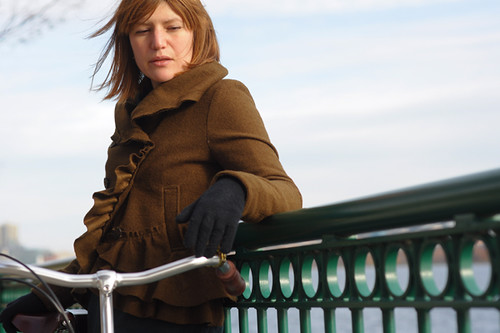
 The Tavern at Stone's Trace. Built in 1839. South of Ligonier, Indiana.
The Tavern at Stone's Trace. Built in 1839. South of Ligonier, Indiana. Bartering at the encampment.
Bartering at the encampment.



 Ed's comments,
Ed's comments, "The north face has made my anti-bucket list; that is, I've added it to places I would rather not be. I have recalled two interesting anecdotes about this area."
"The north face has made my anti-bucket list; that is, I've added it to places I would rather not be. I have recalled two interesting anecdotes about this area."




 First things first. Attention everyone. There was a wicked layer of surface hoar that didn't get any sun action today before the clouds started rolling in. It's going to get buried. There are all sorts of facets in the snow in the top 20 cm. What's worrisome is that the surface hoar is growing on a layer of sun crust. Underneath the sun crust is another layer of facets. Check out the snowpit profile.
First things first. Attention everyone. There was a wicked layer of surface hoar that didn't get any sun action today before the clouds started rolling in. It's going to get buried. There are all sorts of facets in the snow in the top 20 cm. What's worrisome is that the surface hoar is growing on a layer of sun crust. Underneath the sun crust is another layer of facets. Check out the snowpit profile. So the rest of the trip to Muir was outstanding. Skiing was 7 out of 10, for the windswept snowfield, anyway. The new snow that is forecast should make the skiing even better.
So the rest of the trip to Muir was outstanding. Skiing was 7 out of 10, for the windswept snowfield, anyway. The new snow that is forecast should make the skiing even better.
 This is it. Finally our snowpack at Paradise is back to normal at 78 inches. The rain from the last warm spell has stopped and we have up to 18 inches of new snow that has consolidated and another 5 inches of pretty light snow on top of it.
This is it. Finally our snowpack at Paradise is back to normal at 78 inches. The rain from the last warm spell has stopped and we have up to 18 inches of new snow that has consolidated and another 5 inches of pretty light snow on top of it.




 The route in Spring
The route in Spring


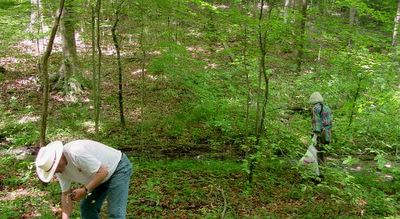
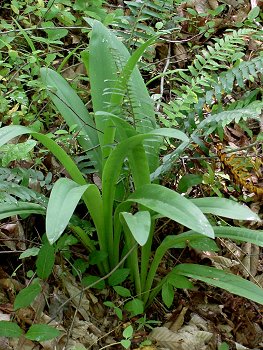
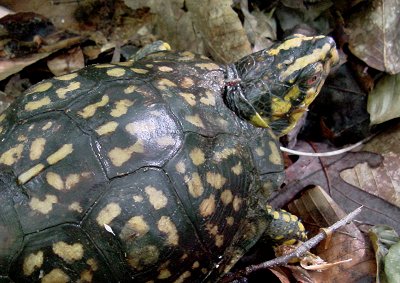


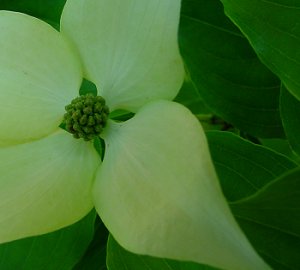


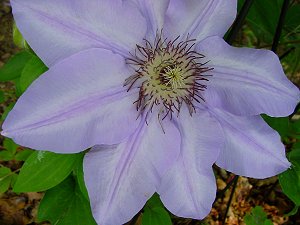

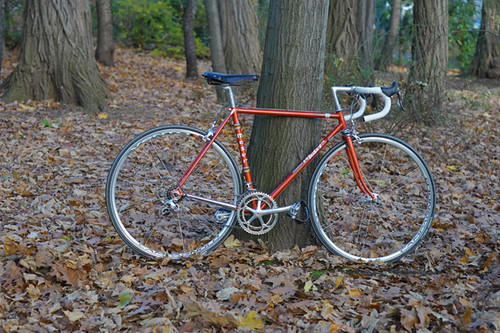


 It's almost time for the Opening Ceremonies! The Genea-Blogger Group Games (henceforth known here as "The Games") officially begin on Saturday with genea-bloggers from around the world participating. Consisting of five categories with various tasks to be performed, The Games will certainly be a challenge. I'm looking forward to these games and "meeting" some of the new Genea-Bloggers. I'm also looking forward to those "other" games that will be going on at the same time!
It's almost time for the Opening Ceremonies! The Genea-Blogger Group Games (henceforth known here as "The Games") officially begin on Saturday with genea-bloggers from around the world participating. Consisting of five categories with various tasks to be performed, The Games will certainly be a challenge. I'm looking forward to these games and "meeting" some of the new Genea-Bloggers. I'm also looking forward to those "other" games that will be going on at the same time!